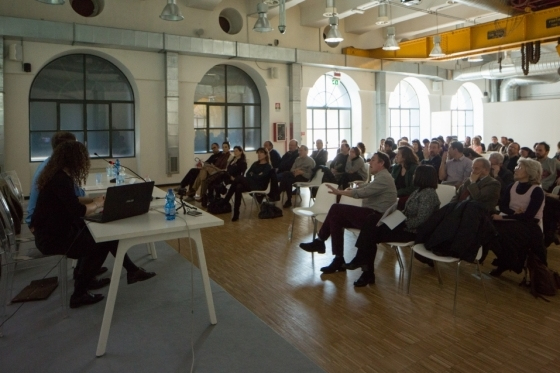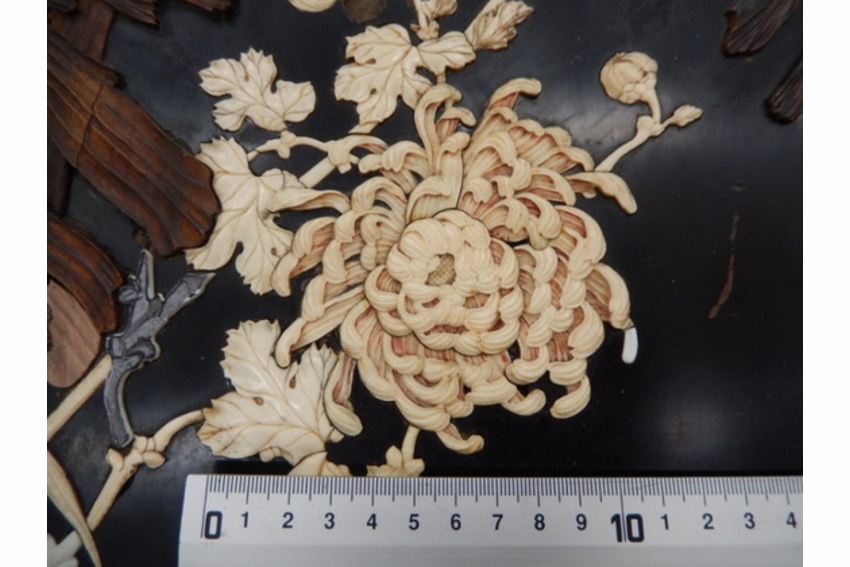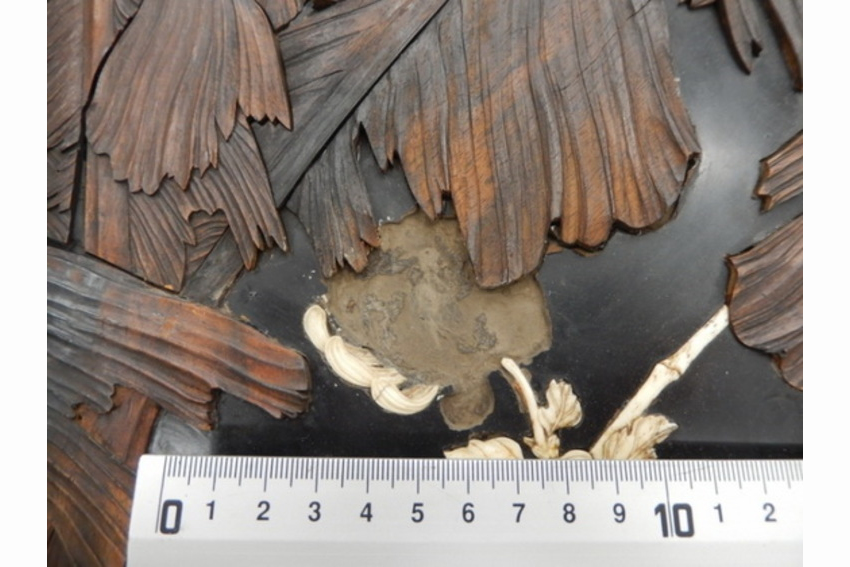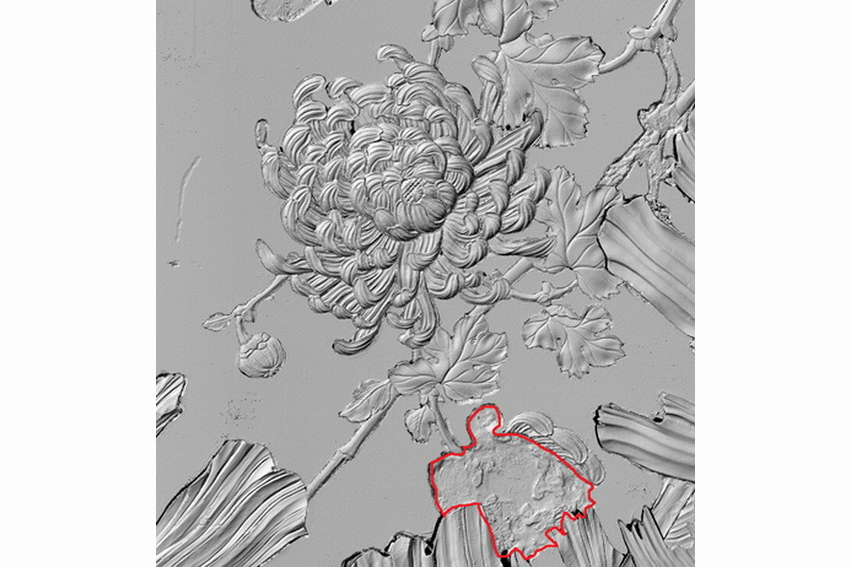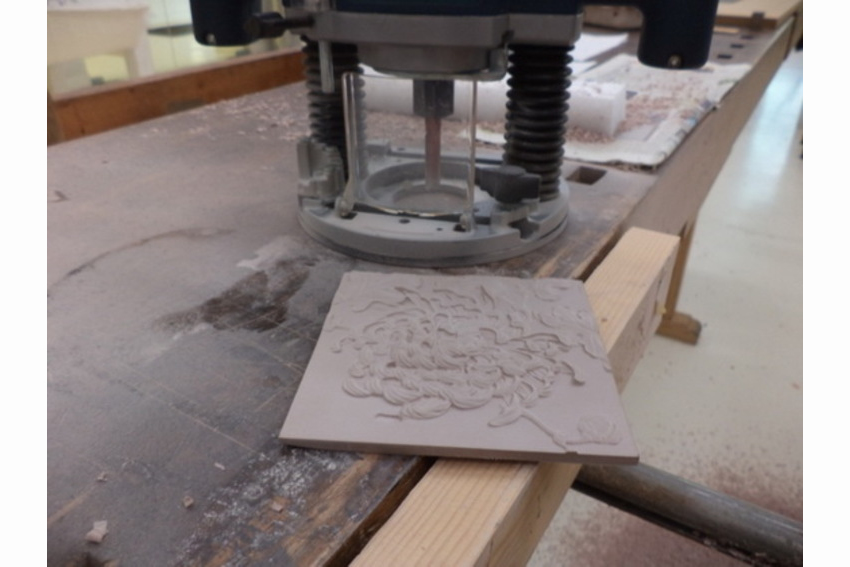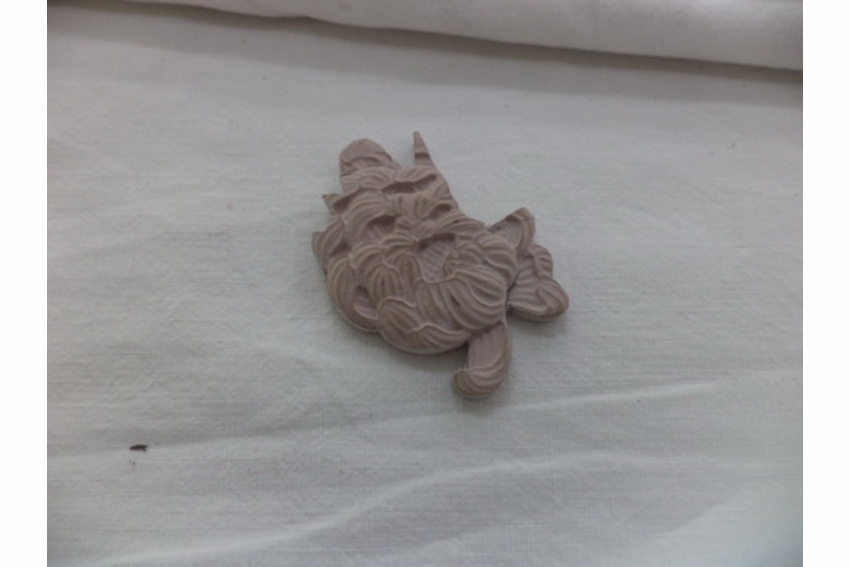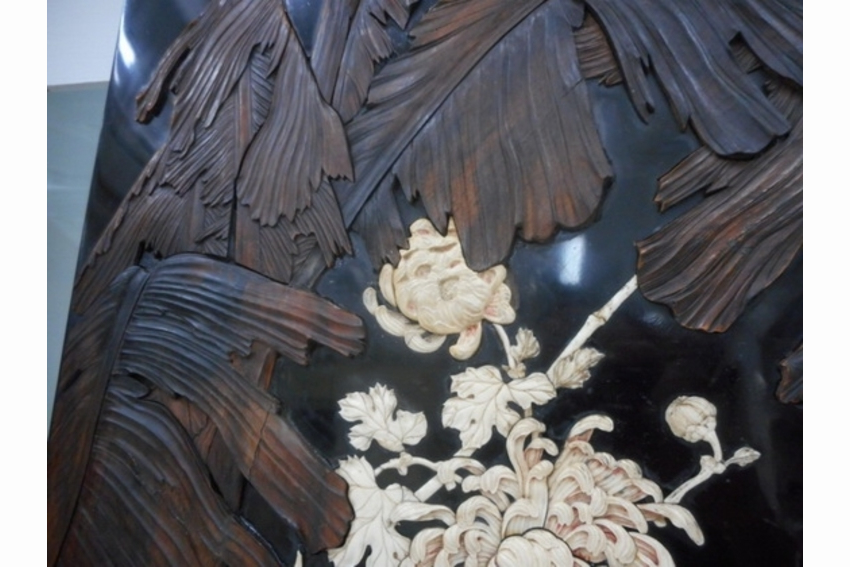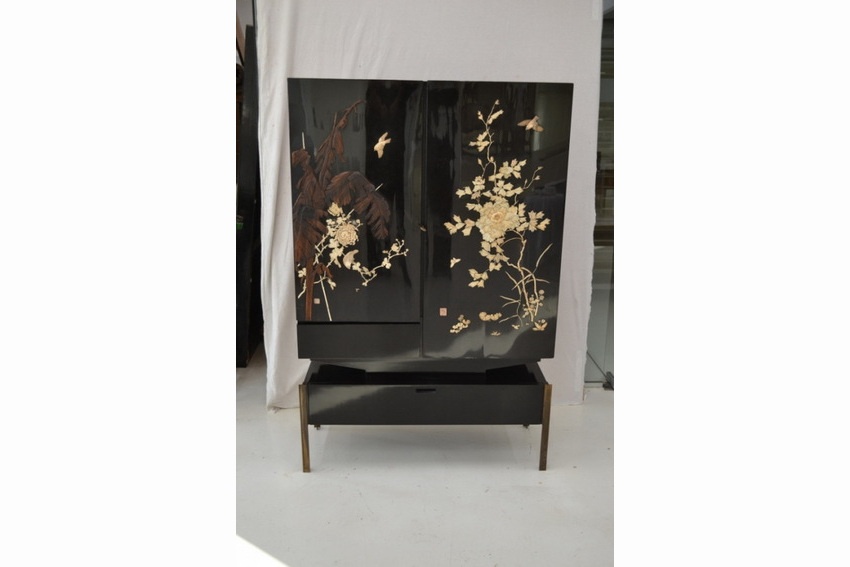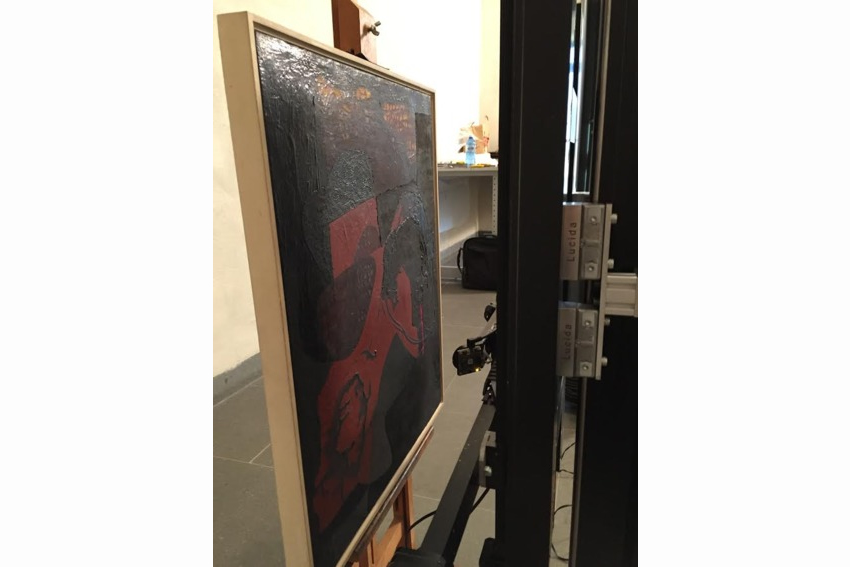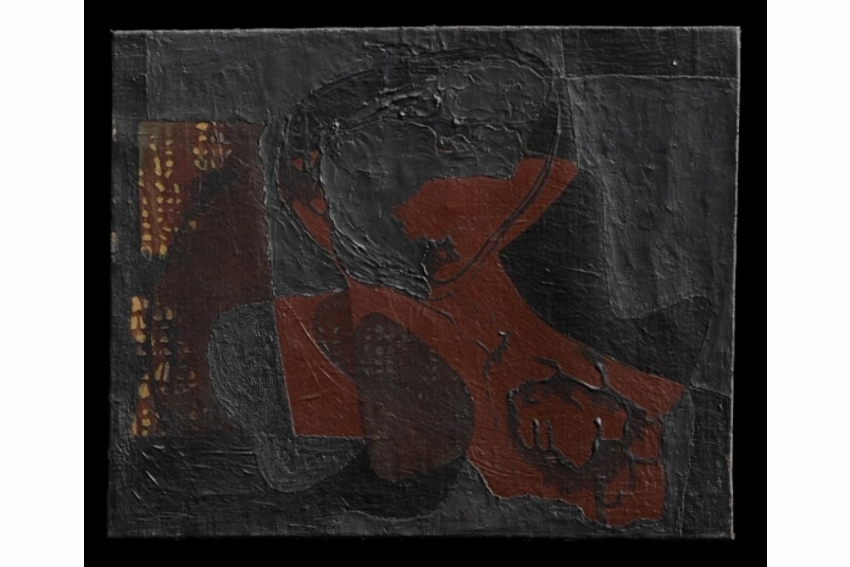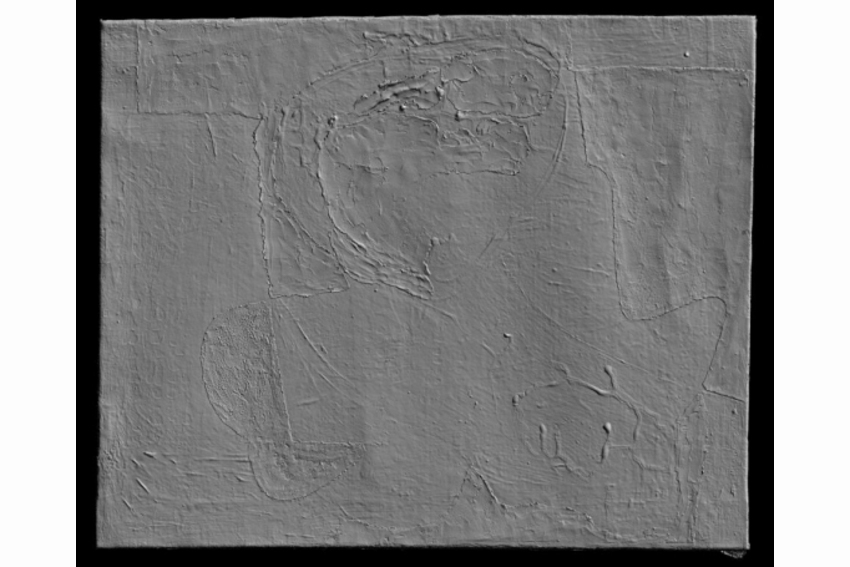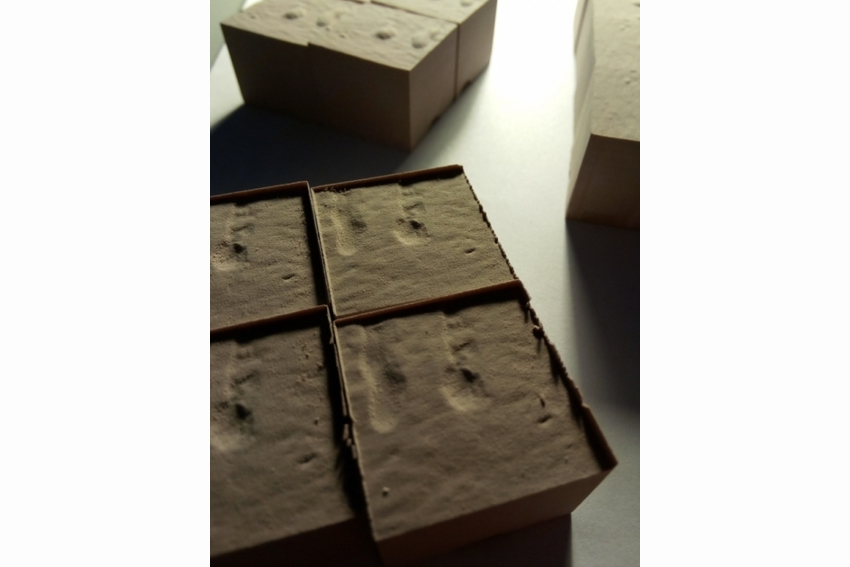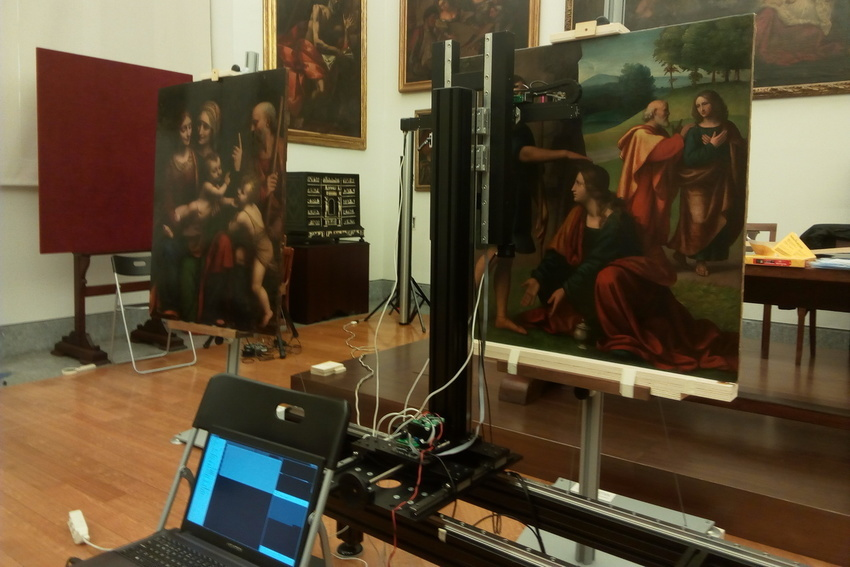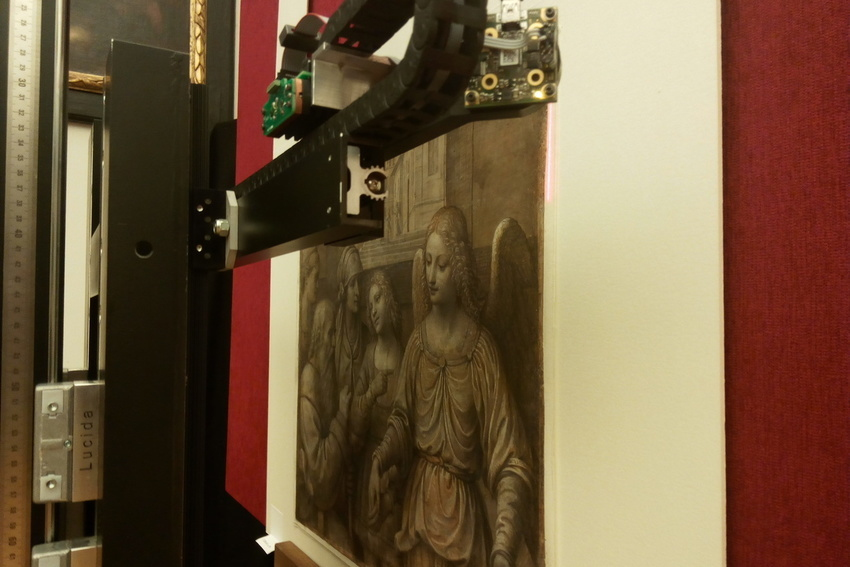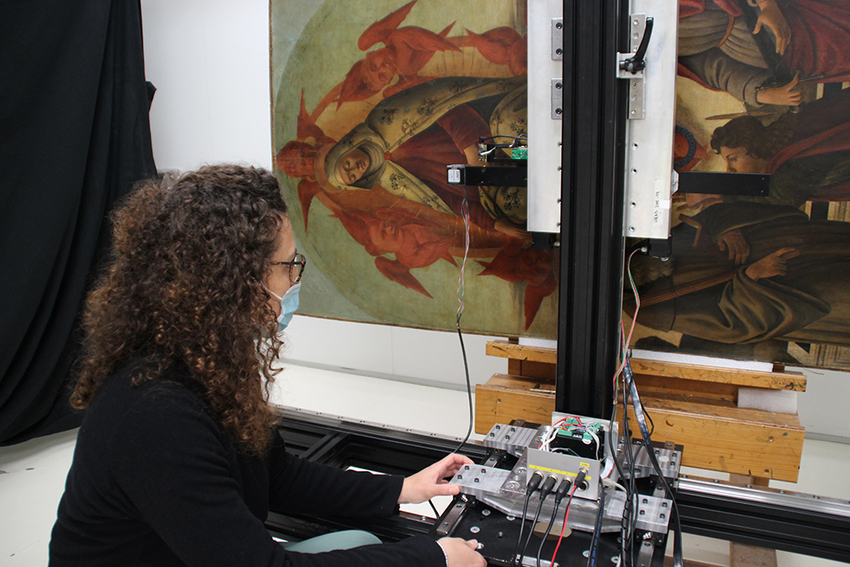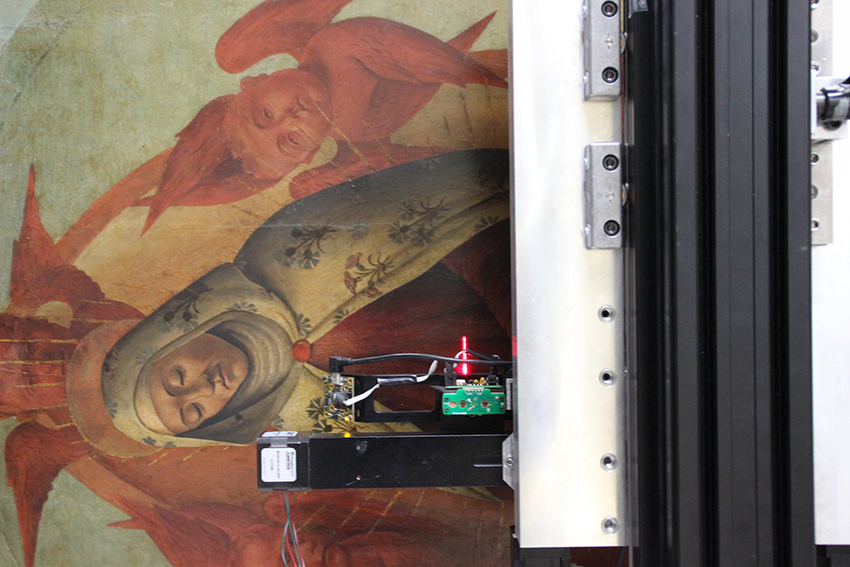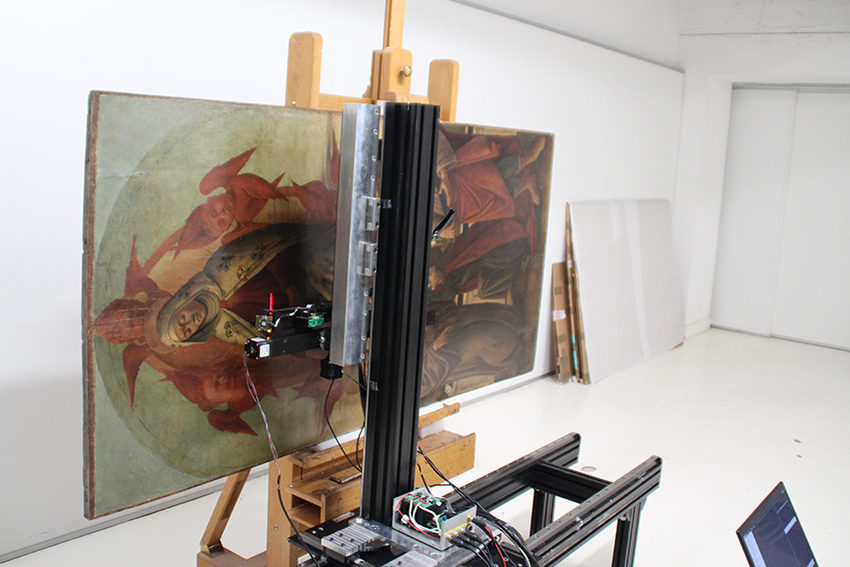As well as a wide range of digitisation projects involving both Factum Foundation and Open Care’s areas of expertise, the Lucida Lab was also dedicated to the dissemination of the role new technologies play in the preservation and restoration of cultural heritage. Training sessions, visits and seminars were offered for students, conservators, restorers and cultural heritage professionals.
Some of the projects carried out by the Lucida Lab include:
Reintegration of a missing fragment in a 19th-century cabinet
In collaboration with Giuseppe De Gennaro, Wood Furnishing Conservator at Open Care
November 2015
This restoration project of a 19th C. Japanese cabinet was carried out as part of a collaboration between Factum Foundation and the Open Care Wood Furnishing Laboratory of Antique Scientific Instruments. The Lucida 3D Scanner was employed to record part of the ivory decoration in high resolution, with the aim of producing a missing detail and reintegrating it. The scanned piece was re-materialised in high-density polyurethane resin from the 3D data, and hand-painted following restoration guidelines.
Studying the surface of Alberto Burri’s Catrame
In collaboration with Francesca Salari, Accademia di Belle Arti Aldo Galli, Como
January 2016
Lucida Lab was involved in a research project carried out by Francesca Salari over Alberto Burri’s Catrame (1950), a painting donated to the GAMeC – Galleria d’Arte Moderna e Contemporanea di Bergamo in 2004 by collectors Gianfranco e Marta Stucchi.
The research, supported by GAMeC, involved an in-depth study of the surface of this oil and tar canvas. The piece was conceived in 1950 and its age, coupled with its materials, made its conservation challenging. In time, the painting’s surface changed causing parts of the painting to slough away from their original positions on the canvas, damaging many of the qualities essential to the understanding of the artwork and its relief.
As part of Salari’s research into alternative conservation approaches for delicate paintings, Catrame was recorded with the Lucida 3D Scanner. Following the recording, the damaged areas of the painting were digitally restored using 3D modelling software and the neighbouring droplets as a visual reference. The process filled in the empty areas with appropriate relief and the digitally restored model was CNC-milled in high-density polyurethane in two reliefs: a positive and a negative.
It would be now possible to make moulds of the two milled surfaces and explore the possibility of creating removable fragments that could be integrated into the original piece as part of its conservation.
‘Luini in nuova luce’
In collaboration with the Pinacoteca Ambrosiana, Milan
2017
Factum Foundation partnered with the Veneranda Biblioteca Ambrosiana in Milan for an international research initiative focusing on the work of Bernardino Luini (c.1480-1532), a Milanese artist from Leonardo’s circle. Made possible by the Prefect Monsignor Franco Buzzi, President of the Accademia Ambrosiana and Fondazione Trivulzio, this pioneering international project produced a series of multi-layered viewers of a number of paintings and drawings attributed to Luini and his workshop.
In January 2017, Factum Foundation coordinated the digitisation initiative of five paintings:
- Holy Family, Bernardino Luini, oil on panel, 118 x 92 cm
- Infant Jesus with a lamb, Bernardino Luini, tempera and oil on panel, 28 x 25 cm
- Tobias and the Angel, Bernardino Luini, drawing on paper, 40,5 x 45,9 cm
- The Virgin nursing the Child, Bernardino Luini’s workshop, tempera and oil on panel, 51 x 41,4 cm
- Noli me tangere, Bernardino Luini’s workshop, oil on canvas, 95,5 x 91,5 cm
All paintings were recorded in high-resolution using the Lucida 3D Scanner and other institutions, including the Politecnico di Milano, Università degli Studi di Milano-Bicocca, Università degli Studi di Bergamo and the Consiglio Nazionale delle Ricerche (Istituto di Fotonica e Nanotecnologie, Istituto Nazionale di Ottica), employed non-contact recording systems such as X-ray and infrared 1705 nm and infrared 1230 nm.
The data obtained from these systems was combined and integrated with the relief information obtained with the Lucida 3D Scanner. The result was presented as high-resolution viewers produced by the Factum Foundation. These data viewers offer scholars and professionals the possibility to study different layers and recorded data of each painting, contributing to their dissemination and analysis.
The project was supported by Fondazione Cariplo, Fondazione Gianmaria Buccellati, Alvise di Canossa and Swiss Lab for Culture Projects. The results of the project were presented to the public on November 30th 2017 at the Convention Center at Fondazione Cariplo in Milan.
Bando Lucida
In collaboration with Open Care and with the support of Euromobiliare Advisory SIM
2015, 2020
This competition, sponsored by Open Care and Factum Foundation with the support of Euromobiliare Advisory SIM, offered the winning artwork to undergo analysis using 3D technology and restoration.
The first edition in 2015 selected the Angelo Annunciante, a mid-16th Century painting attributed to Gaudenzio Ferrari and presented by the Società di Incoraggiamento allo studio del disegno e di conservazione delle opere d’arte in Valsesia (Varallo). The panel was in a state of severe fragility and was recorded using the Lucida 3D Scanner before and after its restoration in Open Care’s facilities. The in-depth study and analysis of the colour allowed for definitive attribution to Gaudenzio Ferrari.
The restored painting was part of the display ‘Il Rinascimento di Gaudenzio Ferrari’ at the Palazzo dei Musei – Pinacoteca di Varallo, from March 24 until September 16, 2018.
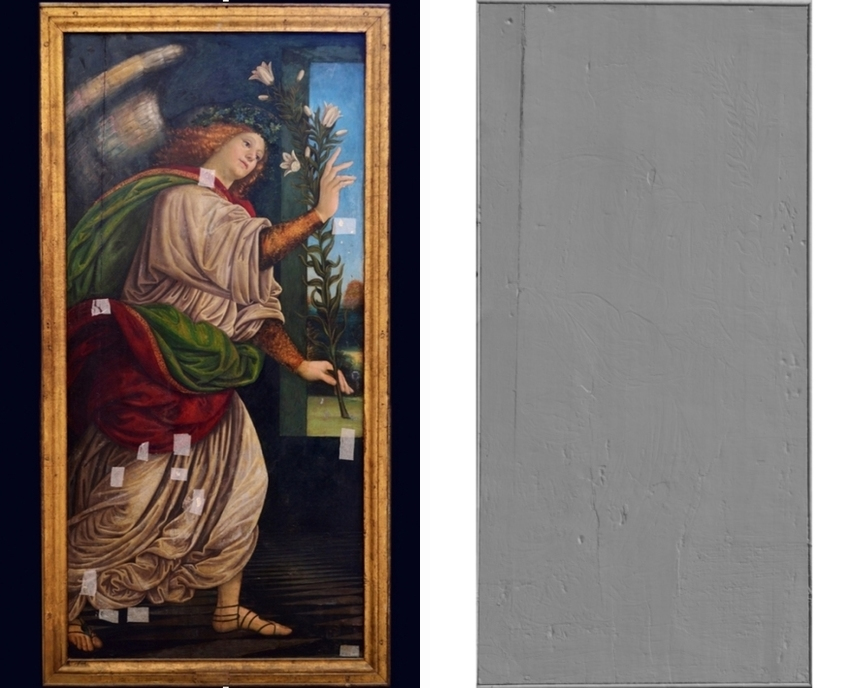
The second edition in 2020 saw the analysis and restoration of the Assumption of Mary and Saints by the workshops of Sandro Botticelli, from the collections of the Monumental Complex of Pilotta, Parma. The painting was recorded in high-resolution using the Lucida 3D Scanner in June 2020, providing essential data that informed the restoration process completed in early 2022.
In April 2022, Open Care presented the restored painting at an event organised at the Pinacoteca Ambrosiana in Milan.
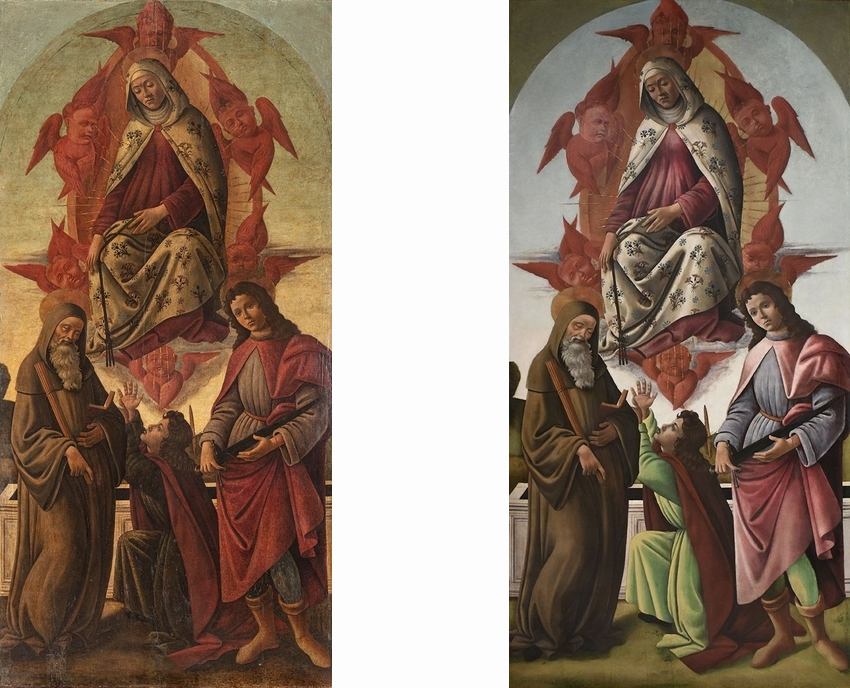
Before and after restoration


